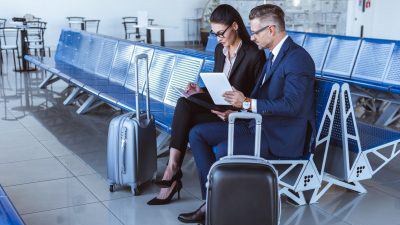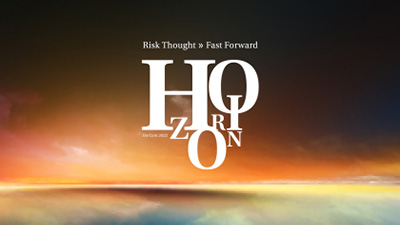The EVER GIVEN shipping disaster at the Suez Canal has affected the entire world economy. An analysis by Prof. Sebastian Kummer illustrates the damage in its entirety, sheds light on the effects on the supply chains and spans the arc to the war in Ukraine.
On 23 March 2021, the container ship EVER GIVEN rammed its bow into the eastern bank of the Suez Canal, blocking it until 29 March 2021. At 20,000 TEU (Twenty-foot Equivalent), the EVER GIVEN, which sails for the Taiwanese shipping company Evergreen, is almost as large as the largest container ships currently in service (24,000 TEU).
There were contradictory statements about the rescue for a long time. Egypt said that the ship would be freed quickly, other sources indicated that it could take longer. This contradiction is caused because one passage costs about 300,000 USD. The uncertain duration of the rescue led to more and more shipping companies diverting ships from Asia towards the Cape of Good Hope from 25 March 2021
How high are the losses caused by the blockade?
Allianz estimated the losses triggered by the blockade of the Suez Canal at up to 10 billion USD per week. This value seems too high, due to the relatively short blockage. The Suez Canal Authority, on the other hand, has estimated the direct costs for the parties involved at just over 1 billion USD. This amount seems too low, as it does not take into account the follow-up costs of the supply chains.
It is almost impossible to put an exact figure on the costs. However, a rough estimate shows the dimension of the problem as well as the diversity of costs.
The Suez Canal, and subsequently Egypt, have suffered high revenue losses due to the ships diverted because of the accident. In addition, the salvage of the EVER GIVEN also caused damage to the canal. The shipping company declared a general average in April 2021. The amount of compensation was not published but is estimated at around 500 million USD.
The delay also meant that intermediate products for production were missing, and other products could no longer be sold or could only be sold at a discount. These costs amount to between 250 and 400 million EUR. In total, the direct costs amount to at least 1 billion EUR.
The Direct Costs – 1 billion EUR
All shipping companies whose ships had to wait due to the disaster have incurred considerable additional costs. The charter costs of the largest container ships are currently around 100,000 USD per day – and even if the shipping companies own the ships, there are immense costs like bunker costs as well as loss of income. Furthermore, for a ship with 20,000 TEU, the rental costs of the containers per day amount to approx. 100,000 USD.
Roughly estimated, about 400 ships were affected by the accident, so the total costs per day due to waiting for time or diversions costs were about 50 to 100 million EUR. Furthermore, the traffic jams caused additional waiting times in the handling ports as well as delayed onward transport, for example, due to limited rail capacities in Europe. The costs listed above roughly add up to around 1 billion EUR
Major damage occurred mainly in the supply chains
Considering that 30% of the world’s container traffic was delayed, one can imagine the enormous economic impact. The International Chamber of Shipping (ICS) estimates that freight worth 3 billion USD passes through the waterways every day; other sources even speak of 9 billion USD. In seven days, that would be 21 to 63 billion USD.
Due to the wide variety of goods transported, it is difficult to estimate the actual damage. Delays for items such as wastepaper from Europe to Asia are rather unproblematic. It is a different story for electrical goods or even seasonal items that arrive late in shops or online sales. If individual supplier parts are missing, bicycles, washing machines or other consumer goods cannot be assembled. The automotive industry has stopped the production because of the chip shortage.
In a National Bureau of Economic Research working paper (2012), economists David Hummels and Georg Schaur estimated that each day of delay costs between 0.6% and 2.3% of the value of goods on board a given ship. Assuming this estimate for the EVER GIVEN, the cost is 18 to 69 million USD per day, which would be 126 to 483 million USD for seven days.
The 6.5-day blockade of the Suez Canal caused damages to the entire global economy of 2 to 2.5 billion EUR.
What environmental damage was caused by the blockade?
Maritime transport accounts for about 3% of global greenhouse gas emissions, and this figure is rising. The blockade of the Suez Canal and the resulting circumnavigation of the African Cape resulted in a much longer route with higher speed and consumption. In addition, the shipping companies tried to make up for the backlog in the following weeks and months by increasing the speed of their ships.
A 20,000 TEU container ship consumes 250 to 300 tonnes of heavy fuel oil, i. e. 200,000 litres per day. With seven additional days of sailing time and about 160 (of the 400 affected) ships that decided to take the diversions, a total of about 224 million litres of additional heavy fuel oil were consumed. Taking into account the additional consumption for increased speeds in the following months, this resulted in an additional consumption of 550 million litres of heavy fuel oil. The formula 3.16/litre heavy fuel oil thus results in additional emissions amounting to 1,738 million kg CO2.
Shipping alternatives?
Unfortunately, the accident hit maritime transport at a time of strained transport chains. In the short term, one could have tried to switch to container trains traveling from China to Europe via the Eurasian Land Bridge. But their capacities were limited.
In the course of the war in Ukraine, oil and gas deliveries from Russia are often discussed. It is forgotten that the existing railway connections of the Eurasian land bridge run through Russia. The Chinese have recognised the strategic dependence and are trying to develop a route south of Russia via Iran and Turkey as part of the Belt and Road Initiative.
Air freight – certainly an alternative for high-value goods – is also very busy. Even before the EVER GIVEN disaster, there were significant delays. Due to the current sanctions against Russia, the country has closed its airspace to airlines from the EU and many other countries. This shows how vulnerable individual modes of transport are and how important it is for international supply chains to have alternatives.
Shortage of delivery capacities with high delivery costs at the same time. Why?
International supply chains were already strained before the Suez Canal disaster due to the lack of containers and air freight capacity. If the closure had lasted longer than seven days, the effects would have been truly catastrophic. After all, around 12% of global trade or 30% of international containers pass through the Suez Canal.
The impact on freight costs was particularly great. Even before the accident, international container rates were at an unprecedented high. The succession of crisis lockdowns and/or production cuts – first in China and then in Europe and the USA – has led to a shortage of containers. Combined with unexpectedly high demand in the US and Europe, freight rates were three times higher than in normal times, and in the aftermath of the disaster, they even rose to 6 times the pre-Covid-19 level.
The price drivers continue to be a persistent container shortage, rising demand, Chinese terminal closures due to Covid-19, lower capacity at US ports, delayed handling at these ports and waiting times at US West Coast ports and Singapore, as well as problems in US hinterland traffic.
Outlook
One of the “lessons learned” from the Covid-19 crisis is that we need to strengthen the supply chain resilience and reduce the dependence on global suppliers. Even before EVER GIVEN, regionalisation of supply chains or at least “nearshoring”, i.e. sourcing from nearby countries, was discussed.
A huge problem is a shortage of and dependence on microchips from Asia, especially from Taiwan. In this context, the EU’s promotion of new chip factories in Europe is very welcome. Austria can consider itself lucky to have a lighthouse project with the Infineon factory in Villach, even though many chips are also flown here to Asia for final production.
Due to the short distance, the good skilled labour and the low wages, Ukraine was/is an excellent nearshoring country. There are some automotive suppliers there. But here too, the war is causing supply chains to break down. BMW in Steyr and Volkswagen already had to stop their production at the beginning of March 2022 due to a lack of cables from Ukraine.
In shipping, bottlenecks like the Suez and Panama Canal will not be eliminated so easily. In the case of the Panama Canal, the second set of locks has already been built to allow larger ships to pass through. Furthermore, there are various considerations to building parallel routes (e.g. through Nicaragua). However, the costs and the negative environmental impact are gigantic. Therefore, one is not aware of any consideration of parallel canals for the Suez Canal.
PHOTO: © S.J. de Waard / CC-BY-SA-4.0 (via Wikimedia Commons)
Related Insights
Pillar of Our Strategy Is Specialisation – Interview With Georg Winter
Georg Winter offers some insights into his vision for GrECo. Interview was originally published in Lockton Global Partners Magazine.
‘Our only focus is on our client’s and people’s needs’
Ante Banovac shares his thoughts about future risks facing the insurance industry and the state of the insurance market in Serbia, Slovenia and Croatia
How bad was drought this year in your region and how much insurance would help to protect against losses?
Such a big drought leads to many negative consequences in many industries, especially in agriculture, energy, logistics, and forestry.

Prof. Dr. Sebastian Kummer
Director of the Institute of Transport Economics and Logistics, WU Vienna and Endowed Chair Professor, Jilin University, Changchun since 2001. Previously he worked at the TU Dresden (1996-2001) and WHU, Vallendar (1987-1996). Together with his team, he has carried out numerous successful research and practical projects for industrial and trading companies as well as for transport and logistics service providers. He has supported numerous transport and logistics tenders. His publication list comprises more than 200 publications, including leading textbooks. He became known to a wider public when he was stranded with his sailboat in the Aegean Sea due to Covid 19 restrictions.








